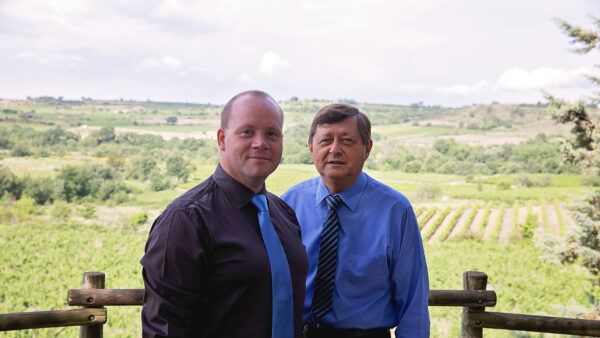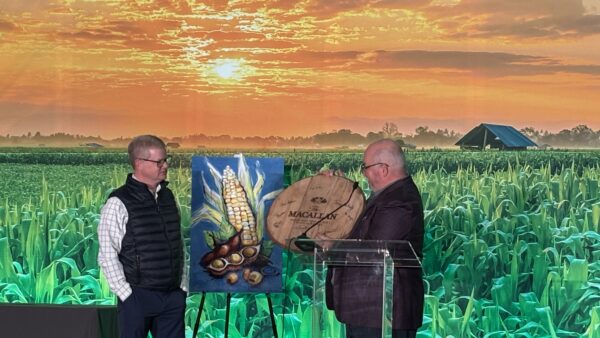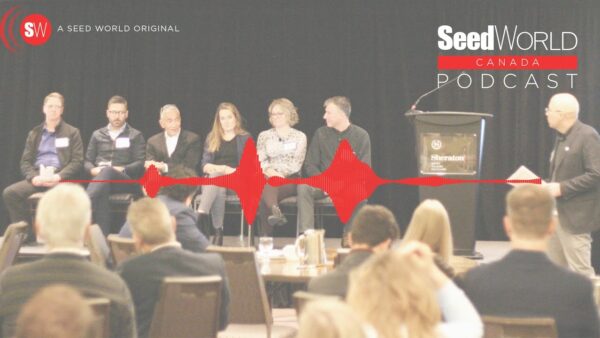Off-patent genetics offer opportunities for independent seed companies.
The seed industry stands on the cusp of a transformative shift as key corn trait patents near expiration, creating ripples that are likely to reshape the competitive landscape. Traits like Herculex I (TC1507) and Herculex RW (DAS-59122-7), known for their robust insect resistance, are poised to go off-patent in 2025. This timeline marks the opening of a window for smaller seed companies to access genetic technologies that have been the stronghold of major agribusinesses for decades. The expiration of these patents doesn’t just level the playing field — it introduces new variables into the already intricate calculus of seed innovation, pricing, and regulatory dynamics.
The implications are profound. With foundational traits becoming available for generic use, companies that have long operated in the shadow of giants like Corteva and Bayer suddenly find themselves armed with tools to develop their own proprietary hybrids. This democratization of biotechnology could ignite a wave of creativity, where smaller firms push boundaries to create niche solutions tailored to specific markets or regions. At the same time, the market may see an influx of “me-too” products — lower-cost alternatives that compete directly with branded seeds. While this promises savings for growers, it could also raise concerns about stewardship, as more players in the field increase the risk of misuse or overuse of these traits.
Yet, not all is straightforward in this brave new world. The expiration of patents doesn’t mean an immediate free-for-all; regulatory barriers, licensing of genetic stacks, and the practical complexities of trait incorporation still loom large. Moreover, companies must grapple with the challenge of maintaining efficacy in the face of rising pest resistance. Traits like Viptera (MIR162), set to expire in 2027, are already critical in managing above-ground pests — but as generic versions flood the market, the temptation to overdeploy these technologies could hasten resistance, threatening long-term sustainability.
This convergence of opportunity and challenge paints a complex picture. On one hand, the expiration of patents democratizes access to cutting-edge traits, fostering competition and innovation. On the other, it demands a new era of responsibility, where companies large and small must collaborate to preserve the efficacy of these genetic tools. The coming years will be a test of the seed industry’s resilience and creativity — a moment that will define whether the sector emerges stronger, more diverse, and better equipped to meet the demands of a changing agricultural landscape.

Peter Hyland, CEO of Rusticana Seed, and Colin Steen, CEO of Legacy Agripartners, recently shared their insights into how this transition could impact pricing, biodiversity and the overall strategy of smaller seed companies.
A Chance for Localized Innovation
The removal of patent restrictions could open doors for independent seed companies to innovate and deliver localized solutions. Hyland says this is a critical opportunity for smaller players to step into the game.

“Yes, traits going off-patent will open new opportunities for small and medium-sized companies,” he explains. “But the main thing here is you need good genetics. You can have access to all the traits, but if you don’t have good hybrids with strong yields and good architecture, you won’t win with farmers. This shift will bring something new to the market, but it’s not going to be easy.”
Steen echoed these thoughts, emphasizing the potential for greater diversity in breeding pools.
“The rise of off-patent traits allows people to develop their own breeding germplasm pools,” he says. “It lets us get outside of the two or three really large germplasm pools that exist today. You drive past some of those big company plots, and every entry looks the same. This could be a chance to bring more diversity into our programs and expand our lineups.”
Hyland notes that these changes could help smaller companies reconnect with farmers on a personal level, especially in regions where relationships and trust matter most.
“Farmers today are looking for options,” he says. “Traits coming off-patent might give regional and family seed companies a chance to regain their position and offer those options. Farmers are struggling financially, and so are smaller companies. This could make a real difference.”
Affordability and Accessibility
One of the most significant potential benefits of off-patent genetics is increased affordability for farmers, especially in cost-sensitive areas. Hyland pointed out that pricing has long been a barrier for many farmers who are now paying premium prices for seed products.
“This could make seeds more accessible for farmers who are struggling today,” he said. “We’re talking about traits becoming more affordable. Farmers won’t have to pay $400 a bag — they’ll have options. But again, you need trial networks, strong breeding programs, and solid results to compete with the big companies.”
Steen says this newfound flexibility could allow independent companies to address underserved markets.
“For me, the exciting part is having a strategy for cost-sensitive areas,” Steen says. “For instance, in regions like Central or Western North Dakota, we could offer products that are competitive but not necessarily ‘racehorses’ and price them accordingly. Right now, we don’t have that option. This could open new possibilities for both seed companies and farmers.”
Reintroducing Biodiversity
While the industry often discusses biodiversity, Steen sees this moment as a practical way to increase genetic variety within existing crops.
“At the end of the day, it’s still corn, but diversity in genetics and breeding pools is key,” Steen says. “We need products that perform well but also give us a chance to innovate. No seed company has succeeded long-term with poor-yielding hybrids, so we’ll need to bring our best to the table.”
Hyland added that in regions like South America, where his company operates, farmers have already experienced the advantages of post-patent traits.
“In Argentina, we’ve already learned how to manage temperate germplasm and traits after patents expire,” he says. “Farmers here are early adopters and more open to trying products from regional companies. I think that kind of mindset will be key in the U.S. as well.”
Supporting Independent Companies
For independent seed companies, this shift could be an opportunity to reestablish their place in the market, especially in regions where farmers are seeking localized solutions.
“Maybe this is the rise of family companies again,” Hyland says. “Independent seed companies are looking for ways to serve farmers better with good products across a wide range of traits and maturities. If this helps us expand margins and survive a little longer, it paves the way for the next generation of leaders in family-run businesses.”
Steen sees this as a chance to stabilize the number of independent companies, and perhaps even encourage new entrants.
“Hopefully we can level off the number of independents where we’re at right now and not see that number decline,” Steen says. “Maybe we’ll even see a few new entrants. Hopefully, this encourages people to step into the market instead of looking for a way out.”
Innovation and Customization
The ability to use off-patent traits could also lead to more innovative and customized product offerings, allowing independent companies to respond directly to the needs of their regions.
“We’re very local, so we pride ourselves on knowing our customer base,” Steen says. “Now is the time to analyze what your customers need and start filling those gaps. It’s a lot to think about, but having choices and opportunities is always a good thing.”
Hyland believes that being open-minded is critical for success in this new era.
“My advice to any company is to be open-minded,” he says. “Try new hybrids, even if they’re from competitors. Conduct trials, test different products, and see what works for your land. You’re not losing much by running a trial plot, and you’ll gain valuable insights for the future.”
Despite the opportunities, Hyland warned that challenges remain, particularly with regulatory hurdles in the U.S.
“In South America, the process for post-patent traits is simpler,” he says. “In the U.S., EPA regulations can make things more complicated and expensive, especially for insect traits. That’s a limitation for companies trying to access these traits.”
Steen added that the key to overcoming these challenges lies in preparation and strategy.
“Know your customer base and think about your strategy,” Steen says. “We’re at the cusp of a major shift, and the companies that can adapt quickly and effectively will be the ones to succeed.”
As the industry prepares for the wave of patents expiring in the coming years, independent seed companies are poised to innovate, adapt, and thrive. The path forward may not be easy, but with open-mindedness, strong genetics, and a clear strategy, smaller players can carve out a competitive space in the evolving landscape.
“It’s an exciting time for the industry,” Steen says. “Opportunities like this don’t come around often. We just have to be ready to seize them.”












